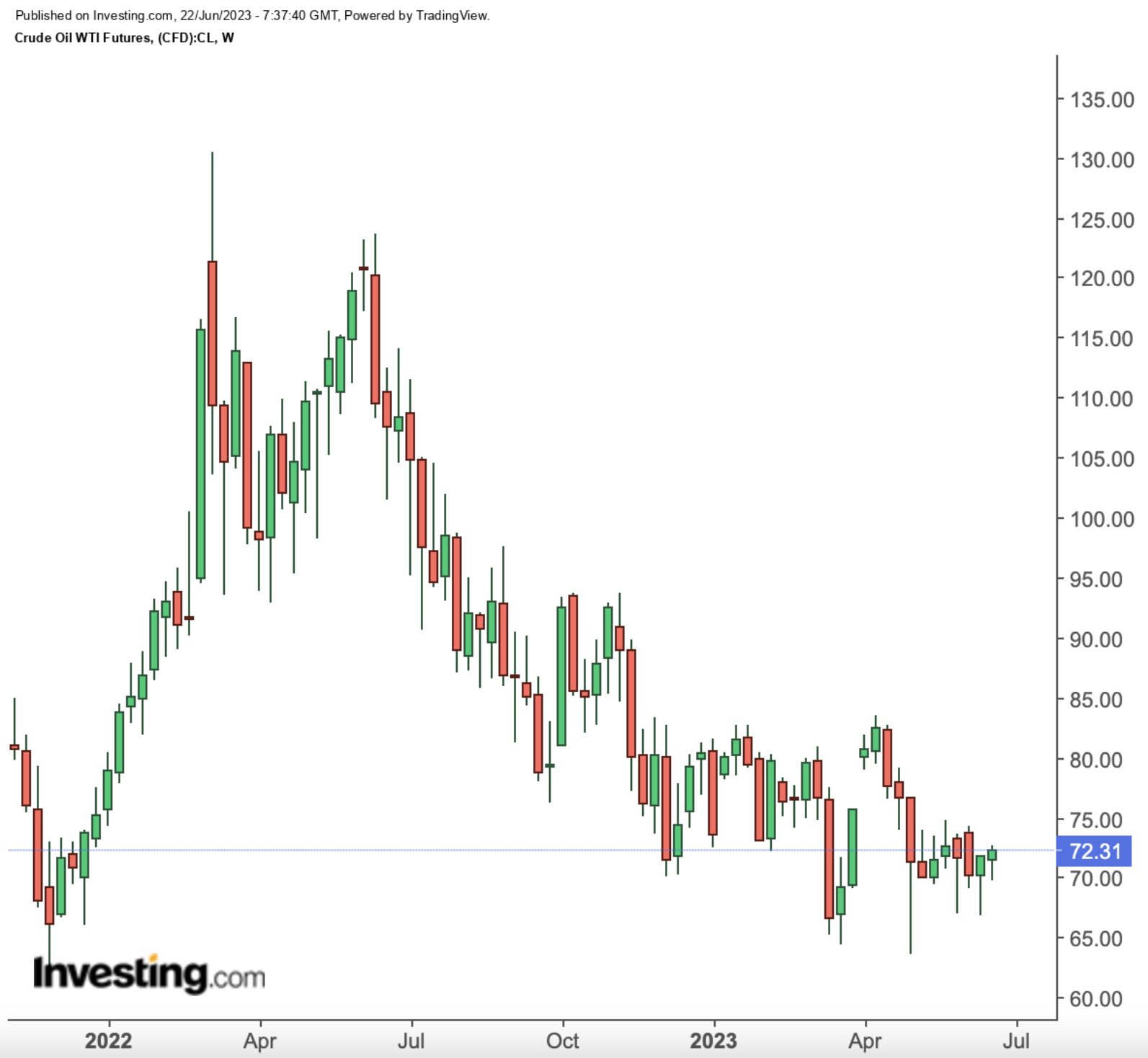- China's uneven economic recovery has disrupted oil market forecasts, keeping prices low
- The Asian giant is importing record amounts of cheap Russian crude, stockpiles for future use
- China prepares for higher domestic demand, expands refining and export business
- InvestingPro Summer Sale is on: Check out our massive discounts on subscription plans!
China is causing major problems for the oil market. Specifically, China’s uneven economic recovery from pandemic lockdowns is throwing a wrench in the oil market forecasts for this year.
At the end of 2022, China’s economic reopening was one of the top factors in oil price forecasts. Some experts, like Daniel Yergin, predicted that oil prices could hit $120 per barrel when China fully reopened.
The IEA predicted that China’s economy would drive over half of global oil demand growth in 2023. (At the time, I argued that analysts were overstating China’s economic potential in 2023 and that a slower and bumpier economic recovery with uncertain oil demand was more likely).
Now that we are halfway through 2023, it has become clear that China’s vaunted economic recovery is not materializing. Real estate, exports, and the industrial sector have not shown the strong economic recovery that was expected. Many banks have cut their oil price forecasts in response to data showing that the Chinese economy is faltering.
As a result, oil prices are sitting in the mid to low $70s instead of pushing triple digits.
On the other hand, China is importing record amounts of cheap Russian crude oil and is putting huge qualities of it into storage. In May, China added 1.77 million bpd of crude oil to its inventories, which is the highest amount it has stored since July 2020. At the same time, refinery runs are also high. China processed 14.6 million bpd in May, an increase of 15.4% from May 2022 and its second-highest monthly total.
However, given the economic data, it does not seem that China is using more petroleum products domestically. Rather, it is taking advantage of cheap Russian and Iranian oil that is available on the market now and processing it into oil products that it is exporting in the region and putting the rest into storage.
According to data from Reuters, China’s refined fuel exports increased by 45.5% during the first five months of 2023.
China seems content to continue importing cheap crude, refining it, and exporting products for the remainder of the year. It recently issued a third bath of crude oil import quotas and increased the total volume refiners are allowed to import. China will allow 194.1 million tonnes of crude oil to be imported, a 20% increase from the same period last year.
This could signal that China is satisfied with the uneven pace of its economic recovery right now but wants to take advantage of cheap crude oil while it can.
Perhaps, China believes it will experience higher domestic demand in the future and is preparing for that by storing cheap crude now. It also sees its domestic refining and export business as an area of economic strength and growth while domestic industrial production is still lagging.
The forecasters were wrong about China’s economic recovery in 2023, but 2024 and beyond could see higher GDP and major jumps in oil demand for China. China is preparing for this, as is Saudi Arabia (by producing less oil right now but securing contracts to supply more crude oil to China in the future).
Traders should be prepared as well.
***
- Monthly: Save 20% and gain the flexibility to invest on a month-to-month basis.
- Yearly: Save a jaw-dropping 50% and secure your financial future with a full year of InvestingPro at an unbeatable price.
- Bi-Yearly: Save an astonishing 52% and maximize your returns with our exclusive web offer.
Don't miss out on this limited-time opportunity to access cutting-edge tools, real-time market analysis, and expert insights. Join InvestingPro today and unlock your investing potential. Hurry, the Summer Sale won't last forever!

Disclosure: The author does not own any of the instruments mentioned in this report.
